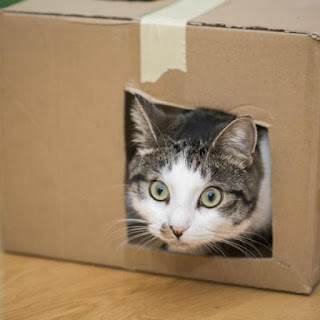Losing your beloved pet is a distressing situation that every cat owner dreads. It brings about a mix of emotions, including sadness, stress, and concern for the well-being of your missing cat or kitten.
Look for your missing cat at home
Cats have a strong attachment to their homes, which means your missing cat could be closer than you realize. Here are some steps to follow when searching for your cat:
Cats have a strong attachment to their homes, which means your missing cat could be closer than you realize. Here are some steps to follow when searching for your cat
Thoroughly search your home: Check every cupboard, including those that are rarely used. Cats, especially kittens, have a knack for finding small hiding spots. Look inside washing machines, tumble dryers, under beds, and in wardrobes.
Expand the search to the immediate area: If you're certain your cat is not inside the house, start exploring the surrounding areas. Begin with bushes and shrubs in your garden. Spend at least 15-30 minutes calling your cat by name, circling the spot where they were last seen. Use enticing tricks like shaking a packet of their favorite treats or dry food. While walking, pause and listen carefully. Pay special attention to outside garages or sheds where your cat may have become trapped or accidentally locked inside.
Consider past escape routes: Think about previous instances when your cat got frightened or startled. Did they run away to a specific location? Check neighboring gardens or the homes of friendly neighbors. Your cat may have sought refuge there.
Asking for help
If you have searched everywhere you can think of and still haven't found your missing cat after a couple of hours, it's time to involve others in the search. Here's what you can do:
Ensure your cat flap is open: Before heading out to search, check that your cat flap is open. If your missing cat returns home, they won't encounter any obstacles getting inside.
Inform your immediate neighbors: Let your neighbors know that your cat is missing and ask for their permission to check their garages, sheds, and gardens. If their windows face your home, ask if they can keep an eye out for your cat.
Contact local veterinary practices and animal rescue centers: Call local veterinary practices and animal rescue centers and provide them with a description of your cat, including their microchip ID. Ensure your contact details are up to date. Ask if they can assist by putting up a poster or sharing information on their website or social media platforms.
Reach out to Cats Protection and animal rescue charities: Get in touch with organizations like Cats Protection and other animal rescue charities in your area to check if your cat has been found or handed in.
Notify your pet insurance provider: If you have pet insurance, contact your provider. They may offer financial assistance and provide advice on finding a missing cat.
Create a flyer: Prepare a flyer with relevant information about your cat, including their name, physical description, and a recent photo. Include your name, telephone number, and email address as contact information.
Seek help from volunteers: Enlist willing volunteers from the neighborhood to help you knock on doors or distribute flyers in the wider area.
Search the vicinity: Walk or cycle along the road near the location where your cat was last seen. Drive slowly through your neighborhood. Show passers-by your flyer and ask them to keep an eye out for your lost cat. If they offer assistance, ask them to help you expand the search to surrounding fields or woodlands.
Post flyers in relevant areas: Post and distribute flyers in the area where your cat was last seen and throughout your home neighborhood. Visit places like shops, post offices, doctors' surgeries, pubs, and gyms, and ask if they can display your flyer to aid in finding your missing cat.
By taking these steps, you increase the chances of finding your cat and getting valuable assistance from others in your community.



